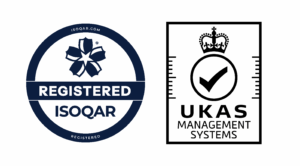Delivering Exceptional Customer Experience – Try, try and try again
Japan is the first Asian nation to host the Rugby World Cup. Rich in culture, famed for their hospitality, Japan is proving to be a transformational driver of sporting and social legacy across Asia.
The sport of rugby, in many ways functions like an enterprise business. Each player brings a specific set of skills, strength, fitness and tact which attribute to the strategy to ultimately win the game. Teams must constantly adjust their strategy to maintain their victorious status and should never underestimate any of their competitors. Think of the stunned reactions when Japan beat Ireland a few weeks ago and in 2015, when Japan beat South Africa in their first match of pool play 34-32, which to this day is referred to as the “greatest Rugby World Cup shock ever”.
It might be painful to watch a team when their performance isn’t up to scratch, but unlike loyal fans urging their team to do well at the next game, in business, not being on top of your game can lose you valuable customers.
So, what lessons can be learned from the World Cup about customer experience?
Although the aim of the game is simple, new rules, TV referees, camera angles and even the kit players wear, has not only changed the game significantly since school prefects wrote the first codified rules of rugby in 1845, but in the last two decades, the game has become big business. Players are bigger, stronger and faster than ever before with training, strength programmes and better nutrition meaning those who take to the field are now in the peak of physical condition.
Enterprises have had to up their game too, with customers more connected, over more channels than ever, and their expectations of brands set extremely high. Customer Experience has become the brutal playing field where businesses must constantly adapt their strategy to beat the competition.
Although Customer Experience is a key competitive differentiator, according to Forrester’s Customer Experience Index, 2019, it’s stagnating. The study reports 81% of brands having stagnant sores in 2019, with no brand making it into the “excellent” category. And 5% of brands saw their scores dip, many of them being industry front-runners.
It would appear the term ‘Customer Experience’ like the overused buzzword ‘AI’, has some brands a little confused. Is it customer service or customer satisfaction or something else?
The best way to explain customer experience is as the impression you leave with a customer, resulting in their perception of your brand, across each stage of the customer journey.
When a customer is satisfied with a company, they are also lower in the cost to serve, but also have a higher potential to be more loyal and maybe they’ll even promote this company among their friends.
When customers interact with a company, they want to achieve a specific outcome. The different touchpoints businesses make available for customers to interact with, are the drivers with which customers can fulfil that need or solve that problem. The channel that customers choose to achieve the desired outcome might be different depending on the query e.g. a request for more information about a product or service, needing assistance in paying a bill or placing an order, however there are four key elements to delivering exceptional customer experience, regardless of the channel chosen by a customer.
Digital Customer Experience must be:
- LOGICAL
- SEAMLESS
- IMMEDIATE AND TIMELY
- FRICTIONLESS
And while there is a plethora of technology available that can contribute to enhanced customer service like AI, Chatbots and Virtual Assistants, it is extremely important to not just invest in technology for the sake of it.
It has become increasingly apparent that many channels are being bolted on with little or no consideration for how they are integrated with the rest of the organisation. For the customer, the existence of siloed channels can be apparent in a variety of ways, such as inconsistency in actions from channel-to-channel; different tone of voice; duplication of messaging; or having to start the conversation anew every time it shifts to a fresh channel.
To put it simply: Customers view their experiences with a company, not with discrete channels. They want an omni-present world where they can transition seamlessly from channel to channel, picking up where they left off in their purchasing or enquiry process, with consistent support throughout their journey.
Businesses that want to be classed as delivering ‘World Class’ customer experiences will have to engage their customers. A rugby game has to deliver on spectator expectations, which won’t be fulfilled if it’s just an endless play of kicking the ball from one side to the other. They will need a clear strategy, supported by powerful integrated technology across channels and staff with a clear understanding of the objectives that need to be achieved.
World Cup takeaways for businesses wanting to deliver on customer expectations:
- Continuously review your customer service strategy, as even small changes can have a huge impact on customer experience.
- Integrate knowledge across all channels to ensure that information is consistent, accurate and quick to access.
- Have a clear strategy in place for the customer service technology you choose to invest in and understand that multiple channels should integrate with each other to create a unified view from the customer’s point of view.
Below are two more assets containing expert advice and insight into the world of enterprise customer service software, powered by conversational AI.

